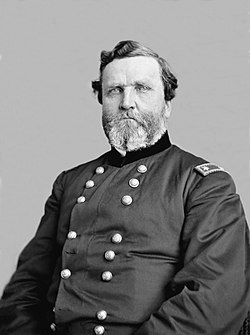Prominent Southern Unionists





- Alabama
- Arkansas
- Florida
- Georgia
- George W. Ashburn
- Foster Blodgett
- John M. Cuyler
- Joshua Hill [6]
- Montgomery C. Meigs [3]
- James M. Wayne
- Kentucky [note 2]
- George Madison Adams
- Robert Anderson [8]
- Francis Preston Blair Jr.
- Thomas E. Bramlette [9]
- Joseph Cabell Breckinridge Sr.
- Robert Jefferson Breckinridge [10]
- Samuel L. Casey
- Cassius Clay
- John J. Crittenden
- Thomas Leonidas Crittenden
- Garrett Davis
- George W. Dunlap
- Henry Grider
- Aaron Harding
- John Marshall Harlan [11]
- Joseph Holt [12] [13]
- James S. Jackson
- Robert Mallory
- John W. Menzies
- James Speed
- Joshua Fry Speed [14]
- William H. Wadsworth
- Louisiana
- W. Jasper Blackburn
- John Edward Bouligny [15]
- Benjamin Flanders
- Michael Hahn
- Theodore G. Hunt
- Philip H. Morgan
- James Madison Wells [3]
- Mississippi
- North Carolina
- Elisha Baxter
- John Baxter
- Henry H. Bell
- John Gibbon
- William Woods Holden [18]
- Alexander H. Jones
- Alexander McRae
- John Pool [19]
- Fabius Stanly
- William Brickly Stokes
- John A. Winslow
- South Carolina
- Tennessee
- Samuel Mayes Arnell
- George Washington Bridges
- James Patton Brownlow
- John Bell Brownlow
- William Gannaway Brownlow [22]
- Roderick R. Butler
- Alfred Cate
- James P. T. Carter
- Samuel P. Carter
- William B. Carter
- Andrew Jackson Clements
- William Crutchfield [23]
- Emerson Etheridge [24]
- David Farragut [25]
- Fielding Hurst [26]
- Andrew Johnson [27]
- George Washington Kirk
- Gaines Lawson
- Horace Maynard
- William McFarland
- James Mullins
- Thomas Amos Rogers Nelson [28]
- James G. Spears
- Nathaniel Green Taylor
- Oliver Perry Temple
- Jacob Montgomery Thornburgh
- Daniel C. Trewhitt
- John Trimble
- William H. Wisener
- Texas
- Edmund J. Davis
- Edward Degener [29]
- Thomas H. DuVal [30]
- Lemuel D. Evans
- J. W. Flanagan
- Andrew Jackson Hamilton [31]
- Morgan C. Hamilton
- John Hancock
- John L. Haynes
- Sam Houston [32] [33]
- Elisha M. Pease [34]
- Virginia
- John Minor Botts [35]
- Lemuel J. Bowden
- John S. Carlile [36]
- Philip St. George Cooke
- Samuel Phillips Lee
- Ebenezer E. Mason
- Samuel C. Means
- Lewis McKenzie
- Winfield Scott [3]
- Joseph Segar
- Franklin Stearns
- William Terrill
- George Henry Thomas
- Charles H. Upton
- Elizabeth Van Lew
- West Virginia